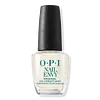What's inside
What's inside
 Concerns
Concerns

 Ingredients Side-by-side
Ingredients Side-by-side

Butyl Acetate
MaskingEthyl Acetate
PerfumingNitrocellulose
Adipic Acid/Neopentyl Glycol/Trimellitic Anhydride Copolymer
Acetyl Tributyl Citrate
MaskingIsopropyl Alcohol
SolventAcrylates Copolymer
Benzophenone-3
UV AbsorberFluorescent Brightener 367
CI 15850
Cosmetic ColorantAdipic Acid/Fumaric Acid/Phthalic Acid/Tricyclodecane Dimethanol Copolymer
Stearalkonium Bentonite
Gel FormingSucrose Acetate Isobutyrate
Citric Acid
BufferingButyl Acetate, Ethyl Acetate, Nitrocellulose, Adipic Acid/Neopentyl Glycol/Trimellitic Anhydride Copolymer, Acetyl Tributyl Citrate, Isopropyl Alcohol, Acrylates Copolymer, Benzophenone-3, Fluorescent Brightener 367, CI 15850, Adipic Acid/Fumaric Acid/Phthalic Acid/Tricyclodecane Dimethanol Copolymer, Stearalkonium Bentonite, Sucrose Acetate Isobutyrate, Citric Acid
Ethyl Acetate
PerfumingButyl Acetate
MaskingNitrocellulose
Propyl Acetate
PerfumingTosylamide/Formaldehyde Resin
Isopropyl Alcohol
SolventTriphenyl Phosphate
Trimethyl Pentanyl Diisobutyrate
N-Butyl Alcohol
PerfumingFormaldehyde
Stearalkonium Bentonite
Gel FormingCamphor
MaskingDiacetone Alcohol
MaskingEthyl Tosylamide
Benzophenone-1
UV AbsorberCitric Acid
BufferingHydrolyzed Wheat Protein
Skin ConditioningDimethicone
EmollientCalcium Pantothenate
CI 60725
Cosmetic ColorantCI 77891
Cosmetic ColorantEthyl Acetate, Butyl Acetate, Nitrocellulose, Propyl Acetate, Tosylamide/Formaldehyde Resin, Isopropyl Alcohol, Triphenyl Phosphate, Trimethyl Pentanyl Diisobutyrate, N-Butyl Alcohol, Formaldehyde, Stearalkonium Bentonite, Camphor, Diacetone Alcohol, Ethyl Tosylamide, Benzophenone-1, Citric Acid, Hydrolyzed Wheat Protein, Dimethicone, Calcium Pantothenate, CI 60725, CI 77891
 Reviews
Reviews

Ingredients Explained
These ingredients are found in both products.
Ingredients higher up in an ingredient list are typically present in a larger amount.
We don't have a description for Butyl Acetate yet.
Citric Acid is an alpha hydroxy acid (AHA) naturally found in citrus fruits like oranges, lemons, and limes.
Like other AHAs, citric acid can exfoliate skin by breaking down the bonds that hold dead skin cells together. This helps reveal smoother and brighter skin underneath.
However, this exfoliating effect only happens at high concentrations (20%) which can be hard to find in cosmetic products.
Due to this, citric acid is usually included in small amounts as a pH adjuster. This helps keep products slightly more acidic and compatible with skin's natural pH.
In skincare formulas, citric acid can:
While it can provide some skin benefits, research shows lactic acid and glycolic acid are generally more effective and less irritating exfoliants.
Most citric acid used in skincare today is made by fermenting sugars (usually from molasses). This synthetic version is identical to the natural citrus form but easier to stabilize and use in formulations.
Read more about some other popular AHA's here:
Learn more about Citric AcidEthyl Acetate is a fragrance.
Isopropyl Alcohol is more commonly known as rubbing alcohol. It is most commonly used as a solvent, meaning it helps other ingredients dissolve.
This ingredient is an astringent alcohol. Astringent alcohols may also irritate skin as they high amounts may strip away your skin's natural oils.
Other types of astringent alcohols include:
According to the National Rosacea Society based in the US, you should be mindful of products with these alcohols in the top half of ingredients.
Any type of sanitizing product will have high amounts of alcohol to help kill bacteria and viruses.
Learn more about Isopropyl AlcoholWe don't have a description for Nitrocellulose yet.
We don't have a description for Stearalkonium Bentonite yet.